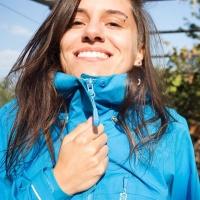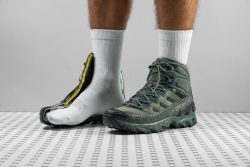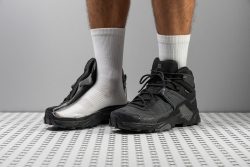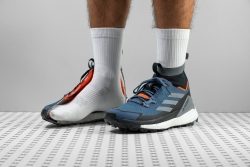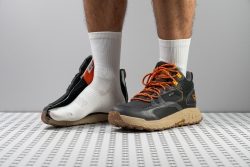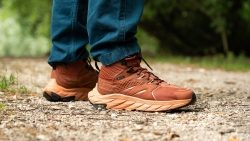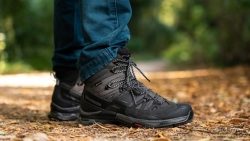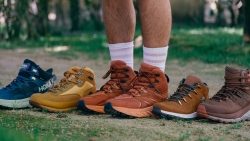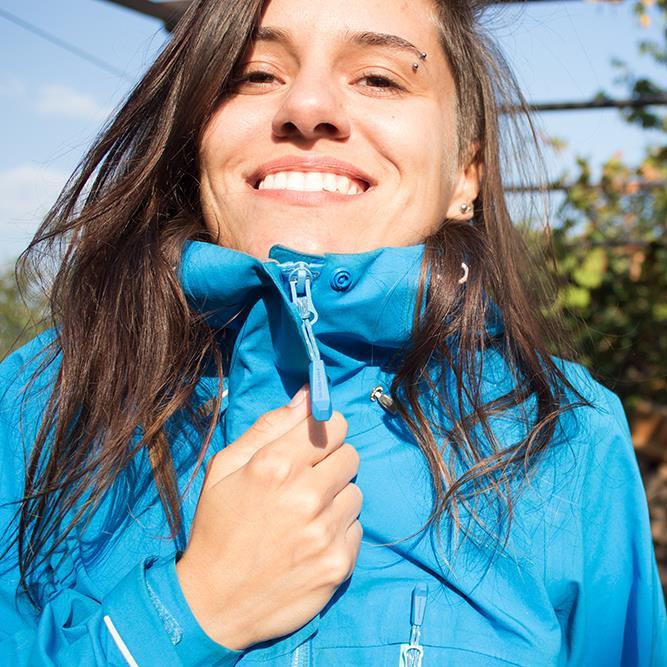6 Best Lightweight Hiking Boots in 2025
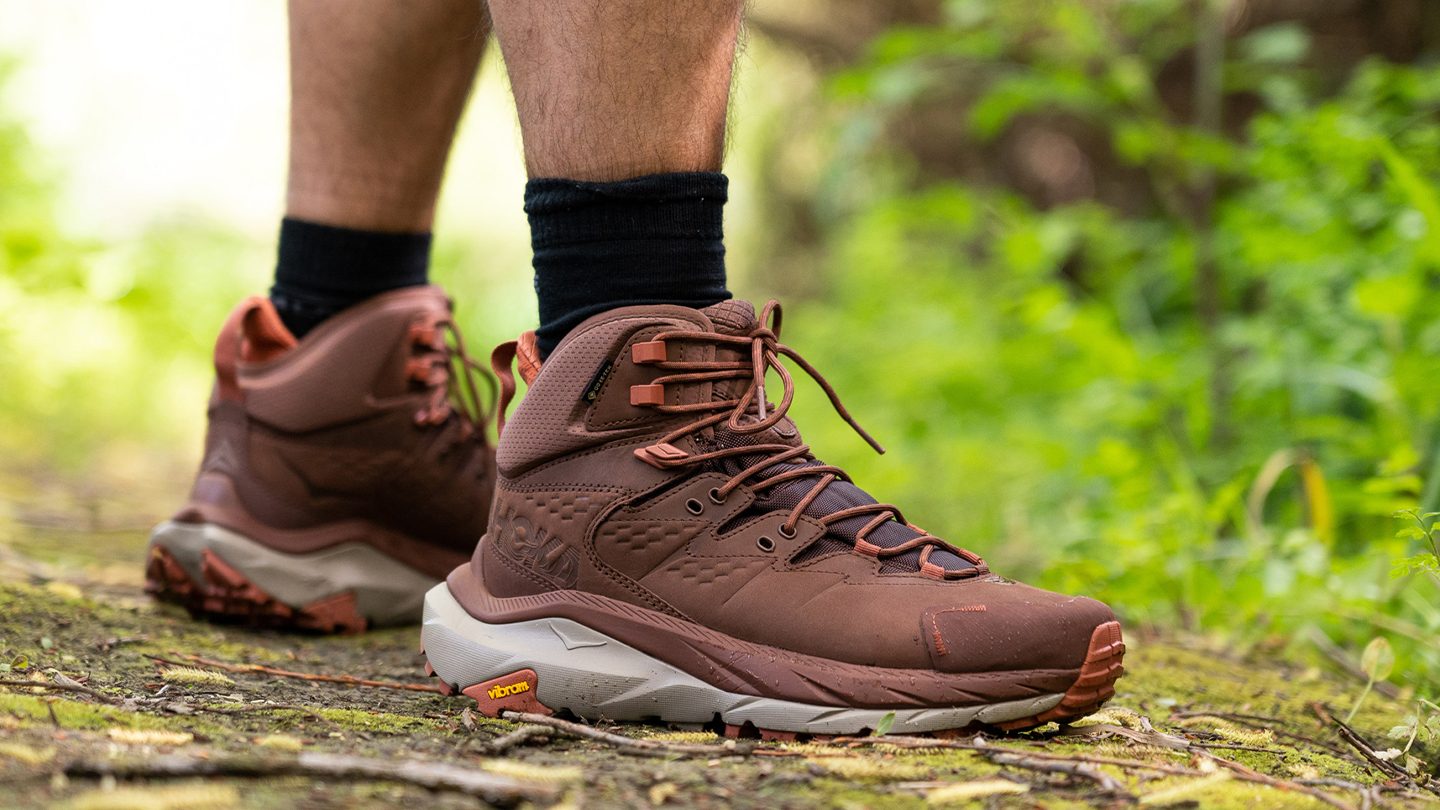
We buy shoes ourselves. We earn commissions when you buy through us, at no extra cost. Why trust us
Traditional hiking boots can be clunky and heavy. Sure, they are made for more demanding conditions and terrains, but that doesn’t mean we need them all the time. Enter: lightweight hiking boots or boots that weigh less than 500g or 17.6 oz. We made this guide to showcase the best lightweight hiking boots and explain what makes them so special.
We have tested and reviewed these boots to help you get the right one for your needs. Whether it is a more rugged one for multi-day backpacking or a more urban-ready style, we’ve got a top pick for different categories.
How we test lightweight hiking boots
We review lightweight hiking boots by being methodical and nitpicky. The process we go through is below:
- We shop for all the hiking boots using our own money. We don't take part in any sponsorships because we want to be as objective as we can.
- We wear-test the boots, taking them on hikes and exposing them to different terrains and weather conditions.
- We perform different tests in our lab that result in over 20 data points that accurately describe different shoe features. We also cut the shoes in half and into pieces to analyze every possible bit of them.
Best lightweight hiking boots overall
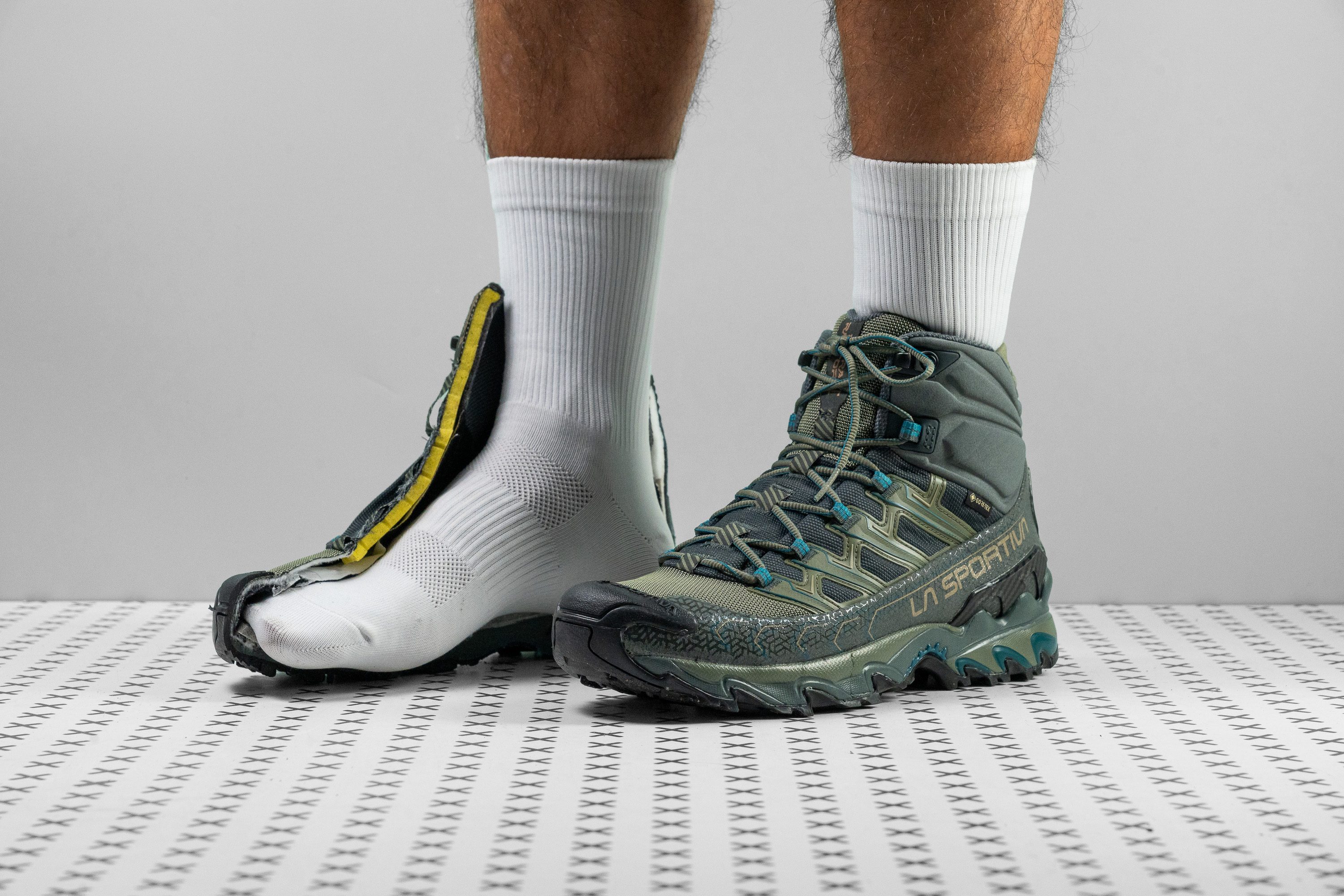















































What makes it the best?
We evaluated lightweight hiking boots in the lab and during our trail adventures and crowned the La Sportiva Ultra Raptor II Mid GTX as the best overall. It stands out with its shoe-like weight and flexibility, which enhances our agility. Our hikes feel effortless and surprisingly surefooted.
We discovered that Ultra Raptor II Mid GTX lies between a hiker and a trail runner — giving a boot’s protection while having a shoe’s sensation. Weighing 14.6 oz (415g), it’s a mindblowing 4.1 oz (116g) lighter than the average hiking boot! It significantly sheds off grams by maintaining a humble stack that gives us more control through better ground feel.
Because of its below-average 34.4/20.3 mm stack, the platform feels easy to maneuver. In our bend test, it needs 14.6% less force than average to reach 30 degrees, significantly reducing the effort we have to exert since the boot has minimal resistance.
In terms of lateral movements, the boot does its job of preventing our feet from spilling over to the side. It offers a firm foothold through its stiff heel counter (4/5) that avoids excessive rear movement. The boot also offers protection through its grippy 4.3 mm lugs, offering the traction we need for various terrains.
However, the streamlined dimensions of the boot narrowed the toebox. Those with wide feet or who prefer more room for toe splay should check alternatives.
Pros
- Unbelievably lightweight
- Excellent waterproofing
- Doesn't let debris and falling rain/snow inside
- Exceptionally robust and durable
- Phenomenal grip on technical terrain
- Not so stiff and firm in low temperature
- Sufficient impact protection
- Highly supportive collar
- Ample flexibility
Cons
- Narrow platform
- Not for wide feet
Lightweight hiking boots with the best shock absorption
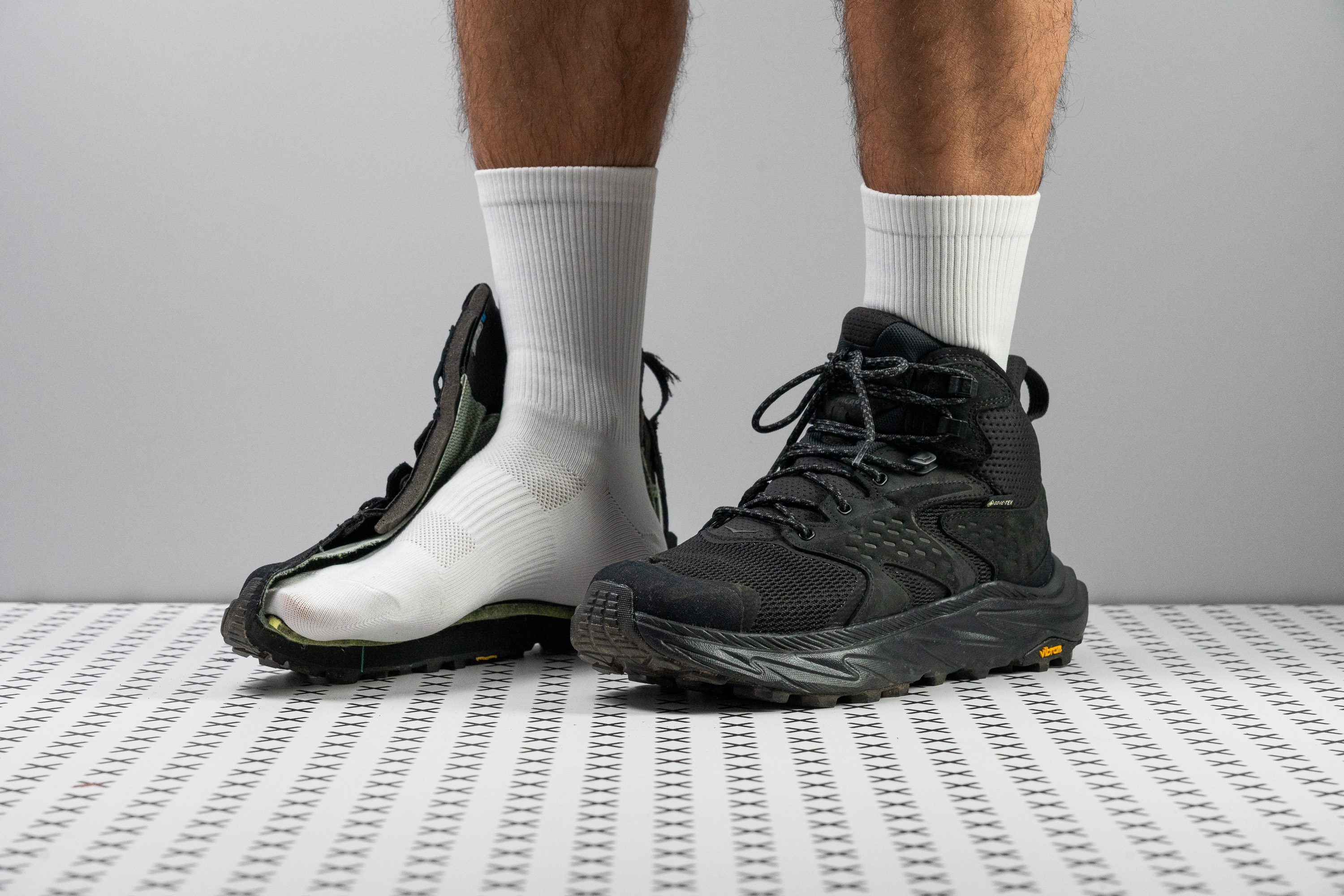












































What makes it the best?
Testing the Hoka Anacapa 2 Mid GTX, the lab numbers we got are off the charts, and so is its comfort. With its highly cushioned feel in a light and flexible package, it offers lasting comfort and minimal fatigue post-hike. It features Vibram rubber underfoot to ensure steady and stable footing. Among the lightweight hiking boots we brought to the mountains, this boot stands out with the best shock absorption.
We tested the heel immediately and confirmed its plush sensation with a high shock absorption score of 118 SA, meaning it reduces landing impact 26.7% better than average. With countless steps throughout our treks, this truly makes a difference in how our legs feel after.
Not only is it cushioned, it feels exceptionally easy on foot, too. It offers a solid combination of lightness and flexibility, offering agility and lasting comfort. Our scales confirm that its 17.4 oz (494g) weight is 7.0% below average, while it showed 21.0% more flexibility than average in our bend test.
Underfoot, the superior Vibram rubber helped us maintain our footing. We measured deep 5.0 mm lugs, with an aggressive design that offers effective gripping power on various surfaces. However, we don’t recommend this shoe for muddy and technical terrain since it lacks ground feel.
Pros
- Well-cushioned for long miles
- Very comfortable step-in feel
- Highly stable platform
- Excellent waterproofing
- Solid grip, even on soft terrain
- More flexible than other boots
- Decent durability for moderate hikes
- A lot of sustainable components
Cons
- Extended heel catches rocks
- Not for technical terrain
- Gained 2 ounces
Lightweight hiking boots with the best stability
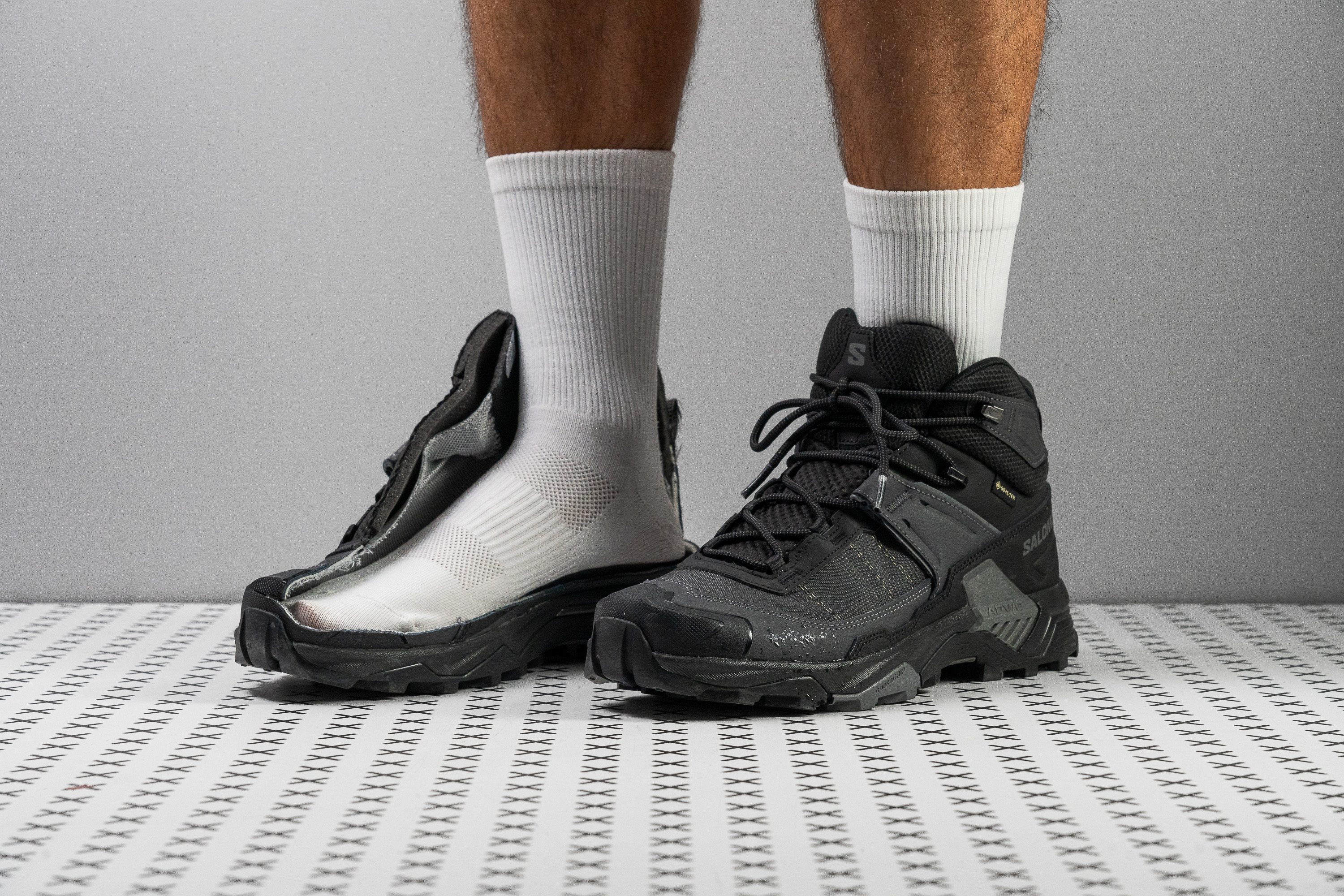











































What makes it the best?
Maximum support is what the Salomon X Ultra 5 Mid GTX delivered in our treks, but amazingly, it never weighed us down. Our lab work confirms that its light and loose build offers solid lateral support, making it our best stability lightweight hiking boot.
This midcut boot offers strong ankle support, which makes it hard to lose balance. The midfoot has the Advanced Chassis as its core support, which is a stiff TPU brace that keeps our feet centered. We attempted to twist the boot manually, and it had no give, so we awarded it the maximum 5/5 torsional rigidity.
Despite its rigid structure, it’s actually forgiving to foot-bending. Its flexible forefoot allows us to maneuver through tricky trails, while its natural feel boosts comfort. In our bend test, it emerged 34.3% more pliable than average.
The main reason this boot feels light and agile is its grounded profile. At 32.5/19.8 mm, it offers enhanced surface feedback. Our scales also reveal it’s only 15.4 oz (437g), making it 17.7% below the average hiking boot.
However, it doesn’t have the deep cushioning that some people prefer. We recommend those with foot pain and other conditions to find a more shock-absorbing boot.
Pros
- Stable and grounded platform
- Flexible forefoot adds maneuverability
- Great grip on wet terrain and rocks
- Surefooted on mixed and hilly trails
- Much lighter than average
- Excellent Gore-Tex waterproofing
- Tough and durable upper
Cons
- Minimal cushioning and shock absorption
- Not for deep mud
Lightweight hiking boots with the best energy return














































What makes it the best?
Countless hours of lab tests and miles on the trails can confirm the Adidas Terrex Free Hiker 2 is our ultimate energetic hiking boot in the lightweight category. It offers the cushion and support of heavy-duty boots while maintaining the ride and nimbleness of trail shoes. It sustains our speed over long excursions without feeling tired.
Terrex Free Hiker 2 aced its midsole, delivering luxurious comfort and unparalleled propulsion. It encouraged faster paces while exempting us from weariness with its luscious 38.4 mm heel and impact-dampening cushion, with a solid shock absorption rating of 121 SA. The platform offers an enjoyable rebound with every step, proven by its exceptional 66.0% score in our energy return test.
Upon first wear, we instantly know it’s lighter than its counterparts. Our scales confirm it’s only 15.0 oz (425g), 20.0% lighter than the average hiking boot. It boosts our agility and speed through various terrains without weighing us down.
The boot caught us off guard with its level of ankle support. It might be lightweight, but it sure is a mighty shield. Besides its massive 114.0/91.3 mm base, it also includes a rigid insert at the heel for stable landings.
While this shoe is easy on the feet, it may break the bank with its $200 price. Hikers who are not willing to invest this much can check other options.
Pros
- Extremely well-cushioned
- Exceptionally lively and bouncy underfoot
- Luxuriously padded interior
- Grippy and durable lugs
- Tackles wet surfaces confidently
- Very flexible and forgiving
- Excellent airflow
- Feels incredibly stable underfoot
- Supportive heel collar
- Rockered midsole
- Relatively lightweight
- High-quality construction
- Eye-catching design
Cons
- Needs breaking in
- Tricky to put on
- Expensive
Lightweight hiking boots with the best comfort
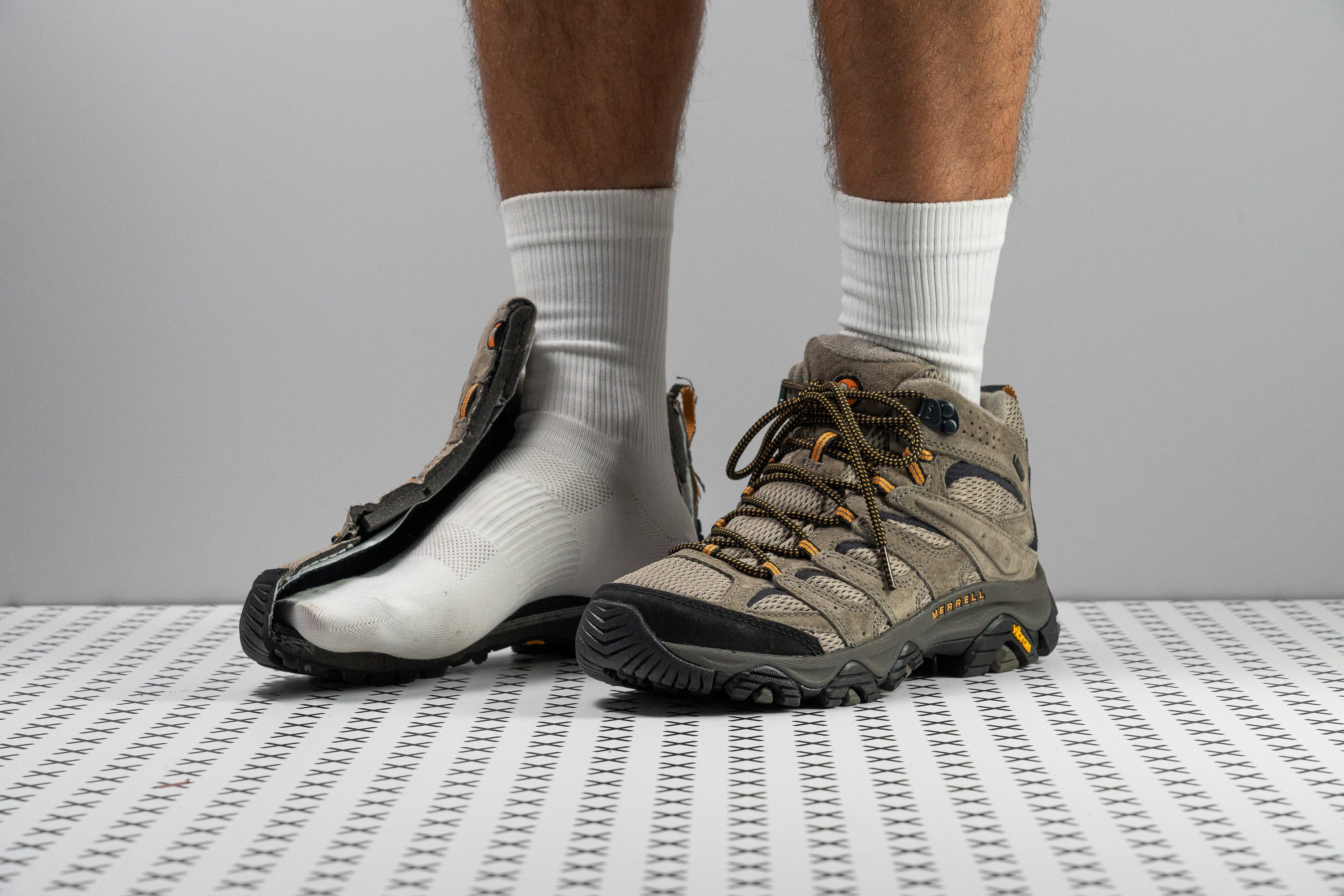




















































What makes it the best?
Blending comfort and protection in an unburdening boot, the Merrell Moab 3 Mid GTX stands out in our treks and lab tests as the lightweight hiking boot with the best comfort. From its minimal build to its well-balanced midsole to its watertight upper, it’s all about keeping our feet happy and safe.
Merrell must have worked some sort of magic to keep the weight of these boots down. We were astonished to find it weighs a surprising 17.5 oz (495g), 6.8% less than average! They literally make light work of long hikes.
When we cut the shoe in half, we found the Merrell Air Cushion tucked into the heel. It feels nice on foot, but considering its 36.1/22.6 mm height, it’s not super plush. We tested for its shock absorption and recorded a below-average 88 SA, balancing both comfort and stability well.
With a full Gore-Tex membrane and a fully gusseted tongue, it’s hard for rain and stream water to get into this boot. In our smoke tests for breathability, we awarded it 1/5—the least breathable score—which confirms our suspicions that this is a seriously waterproof hiker.
However, this Merrell will only be comfortable in cold weather. Its well-insulated nature traps in heat, which feels like a sauna on warmer days.
Pros
- Best-in-class waterproofing
- Great stability for moderate hikes
- Supportive for all-day wear
- Comfortable step-in feel
- Excellent grip on hard terrain
- Secure lockdown
- Sturdy construction
Cons
- Moderate impact protection
- Mesh panels are easy to tear
- Not for mud or soft terrain
- Moderate impact protection
Best lightweight city-to-trail hiking boots
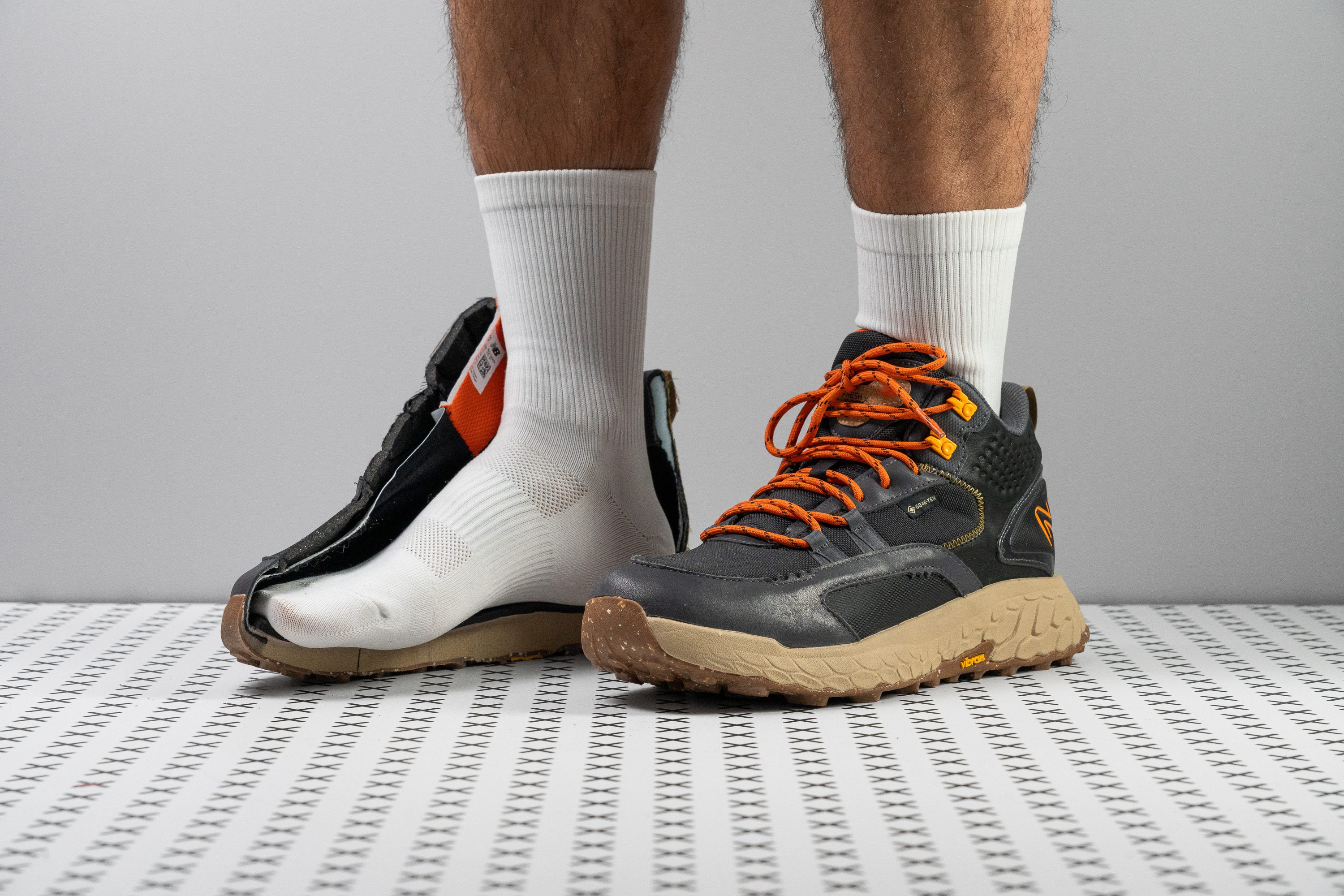










































What makes it the best?
The New Balance Fresh Foam X Hierro Mid GTX packs in heaps of cushioning in an astonishingly lightweight package. Our lab results back up the versatility our feet enjoyed through the impact-dampening midsole, the grippy Vibram outsole, and the fluid build, making it our favorite lightweight hiking boot for city-to-trail adventures!
The Hierro goes all in when it comes to cushioning - it’s super soft, and there’s simply more of it! The plush feel is courtesy of the foam’s excellent shock absorption, specifically at 115 SA, 23.7% better than average! We found the stack to be above average at 35.4/25.3 mm, serving as additional leg protection. Plus, the midsole's high energy return of 59.9% adds to its effortless feel!
On our test hikes, these boots held us steady on uneven forest trails, gravel, and wet soil. The Vibram Megagrip truly delivers with the 4.1 mm lugs and microdots, adding to its superior traction.
Amazingly, considering its many perks, the Hierro is an incredible 5.0 oz (143g) lighter than the average hiking boot, making it a great choice for long days on the mountain. Plus, its flexible midsole adds to its natural feel, confirmed in the lab when it emerged 29.8% more bendable than average.
While this is a waterproof boot, its protection is limited to ankle level, as the semi-gusseted tongue allows water to flow in. But for puddles, rain, and wet grass, this boot effectively kept us dry.
Pros
- One of the softest hiking boots
- Generous cushioning for long miles
- Much lighter than average boot
- Lively and bouncy ride
- Excellent stability and lockdown
- Flexible forefoot
- Effective waterproofing
- Durable upper and outsole
- Grippy on varied terrain
Cons
- Gets notably firmer in low temps
- Low flood level
- Not for technical terrain
How much do these actually weigh?
For a hiking boot to be considered lightweight in our database, it must weigh less than 17.6 oz or 500g. To get some context, here are a few more data points:
- The average weight of hiking boots in our database: 18.4 oz or 520.8g
- 56% of hiking boots in our database weigh more than 17.6oz (500g)
- The average weight of hiking shoes in our database: 13.0 oz or 369.6g
All the hiking boots that enter our lab are measured on the scale and, as it turns out, we don’t always get the same numbers as those published by the brands.
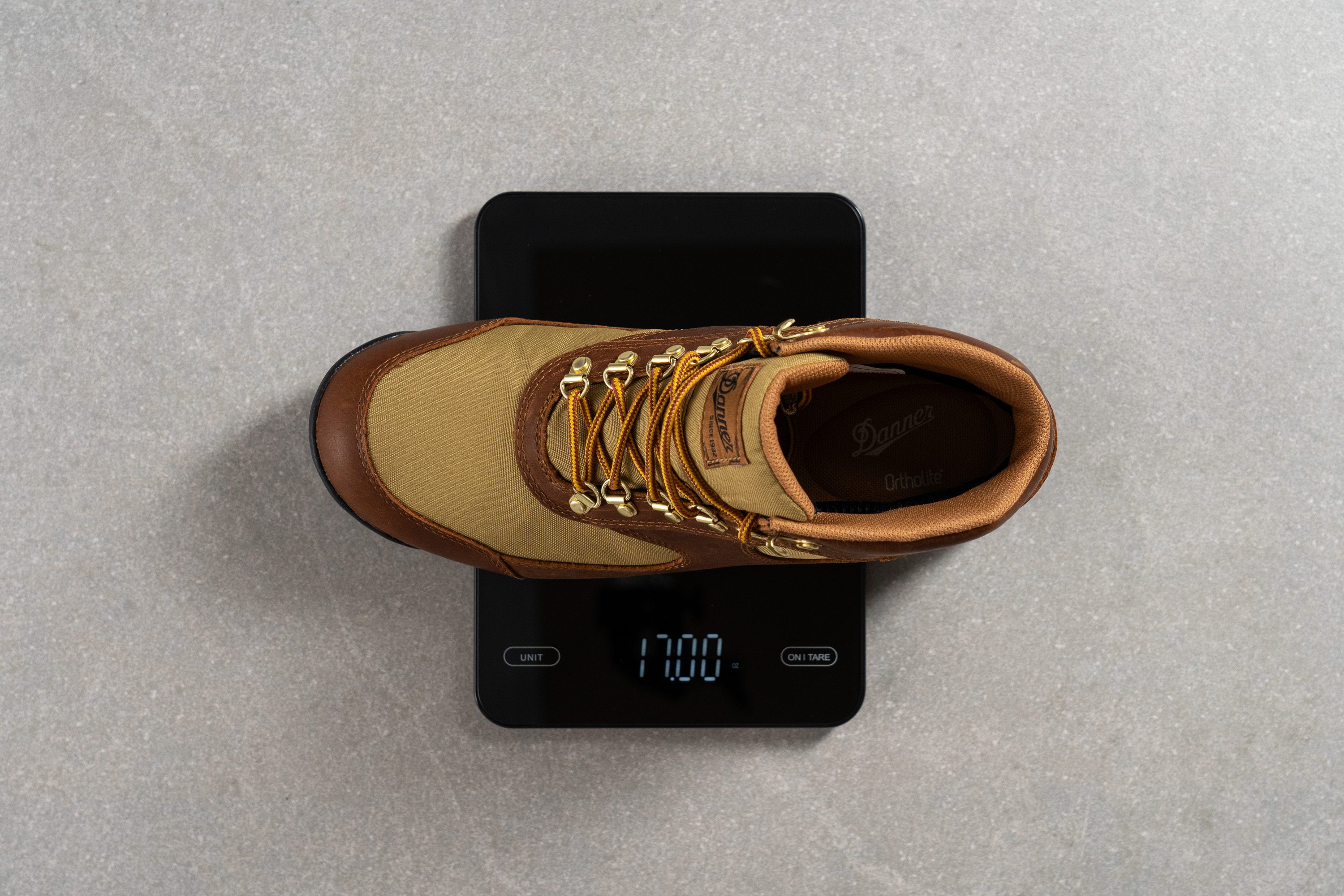
Sometimes there’s even a difference between the weight of the right and left hiking boot.
Pros and cons of lightweight hiking boots
Benefits of hiking in lightweight hiking boots:
- You can experience the hiking world without the extra bulk
- Less strain on the legs, or less foot fatigue because you’re not carrying a lot of weight
- You can do speed hiking and be more agile because of the light weight
The potential downsides of hiking in lightweight hiking boots:
- You don’t get as much support and protection from the boots as the material are lighter, less dense, less firm, and maybe there’s less of them entirely
- You should not do demanding hikes over very long distances and difficult terrain in lightweight boots because you want all the support and protection you can get. This especially applies to backpacking.
- They are not meant for very cold weather as they lack stronger materials and maybe even insulation.
How to nail the fit in lightweight hiking boots
When trying out the hiking boots, here’s what we’re looking for:
- Comfort first. Boots should feel comfortably snug, not tight and not too wide.
- When you push the foot forward inside the boot, there should be one thumb’s width of room behind your heel. Or glue to heel to the back and sense whether there’s room in front of your big toe.
- There should be no pressure/hot spots.
- Your heel must not be slipping.
- When going uphill and downhill, your feet should be locked in the boots and not sliding from one side to the other inside the boots.
How we achieve this?
- We go shopping late in the day when our feet are already naturally swollen a bit.
- When trying out the boots, we use the socks we plan to hike in and maybe even our orthotics (if using).
- We make sure to break in the hiking boots before heading out on the first longer hike in them
Toebox width: precise lab measurements
If you have wider feet and want room for your toes to splay, look for lightweight hiking boots with more room or a wider toebox. In our lab, we measure the width of the shoe and the width of the toebox. We can make these precise measurements because we have a special gel that fills the hiking boot interiors and, once frozen, is easy to work with.
Pouring and freezing the gel to make the gel mold
When the mold is ready, we take it out of the boot and use a digital caliper to measure the volume of the shoe.
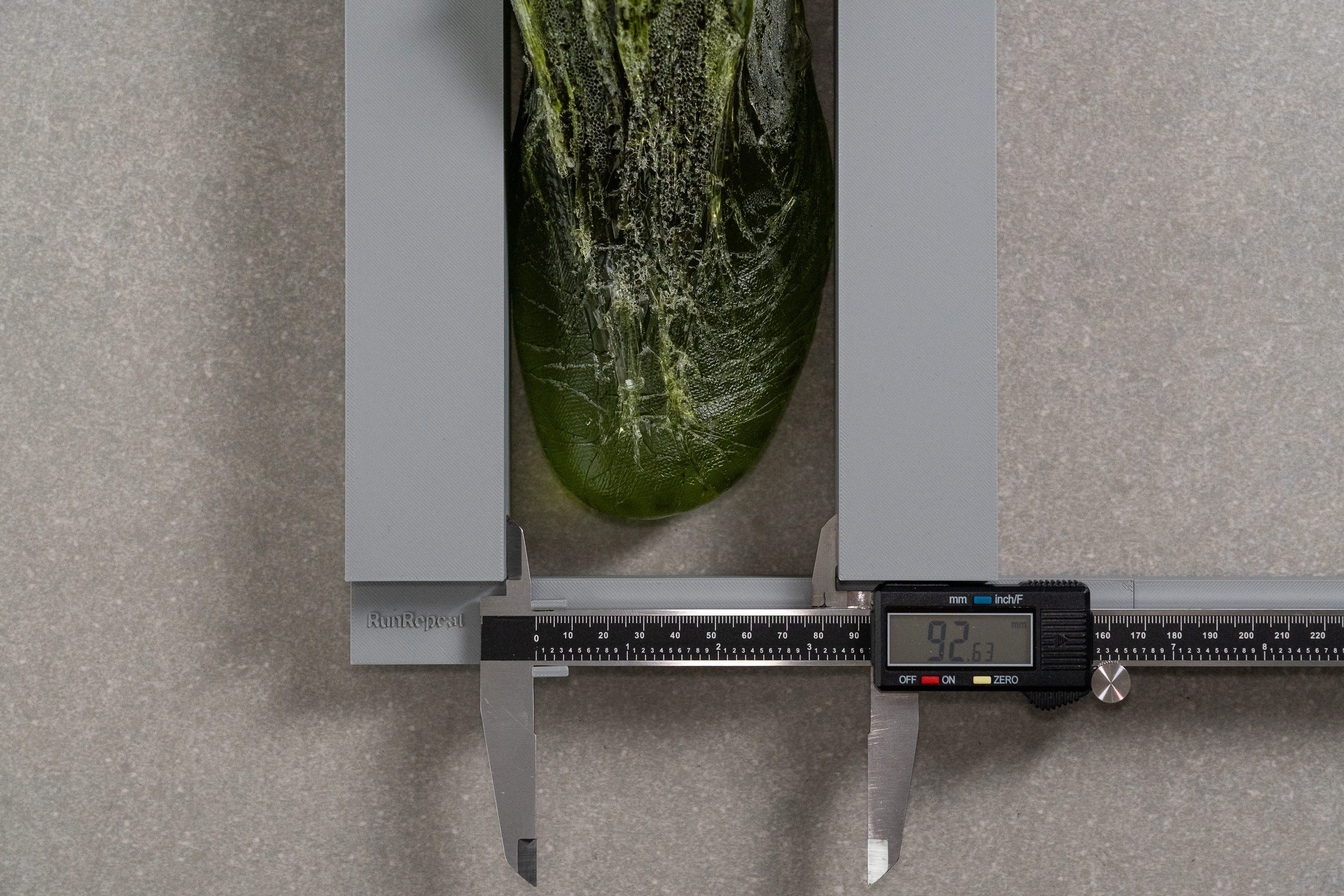
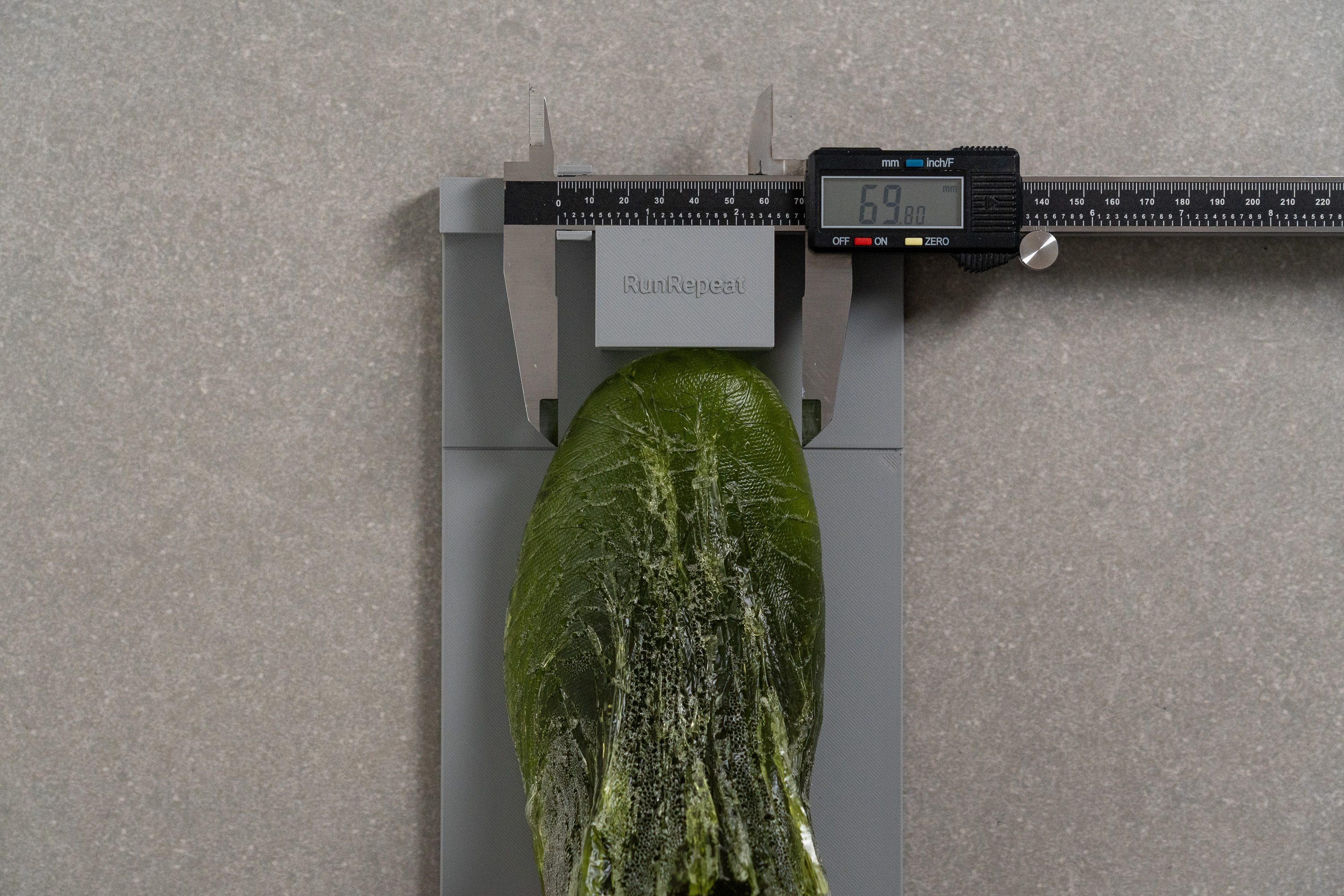
Having this gel mold that perfectly fills the interior of lightweight hiking boots also allows us to measure the height of the toebox. We do this after we cut the gel in half lengthwise to get the most precise measurement possible.
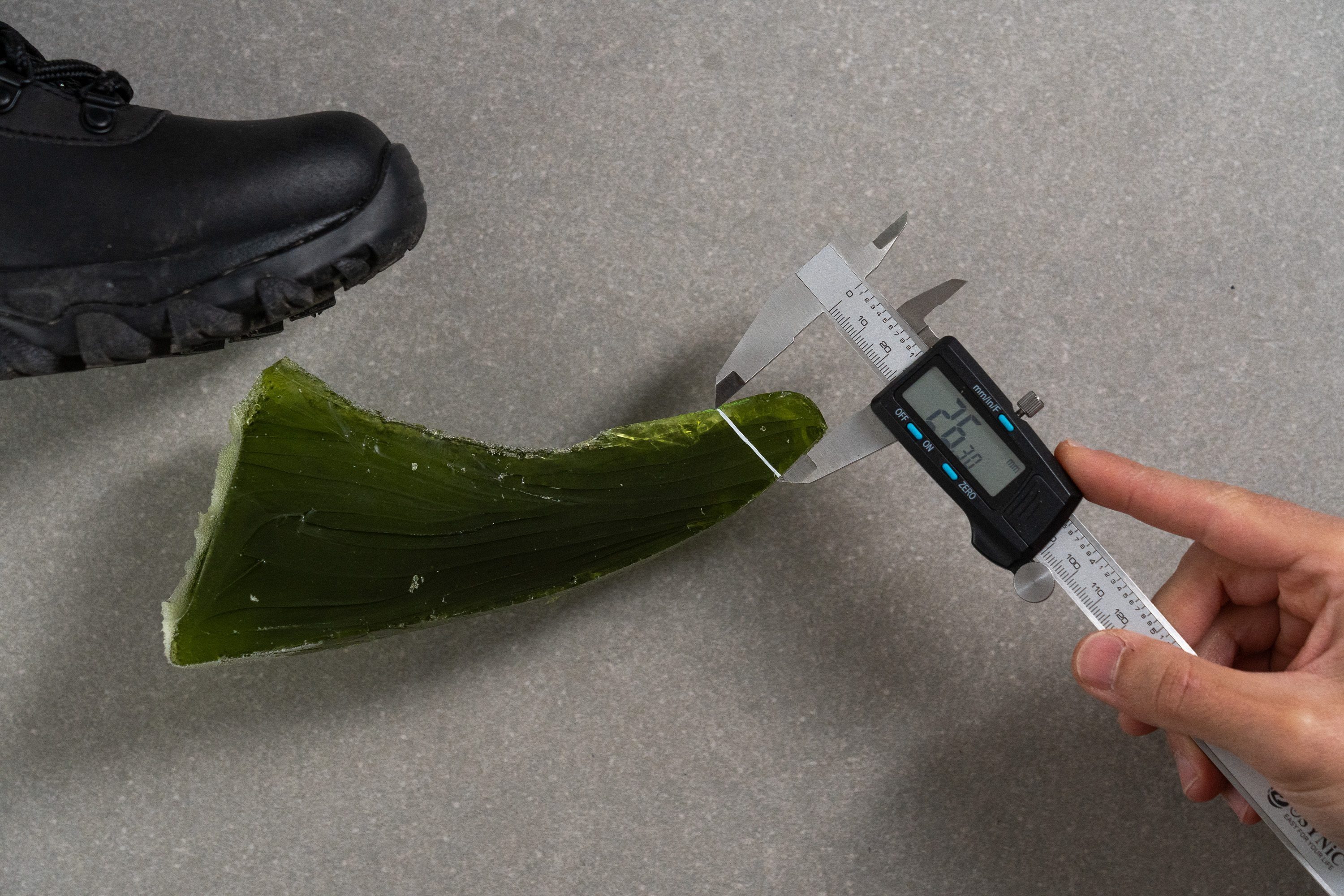
We tend to give more value to the big-toe measurement because it’s where the toes would like to splay. Especially if you have non-Egyptian toes. But you will know better where you need more room!
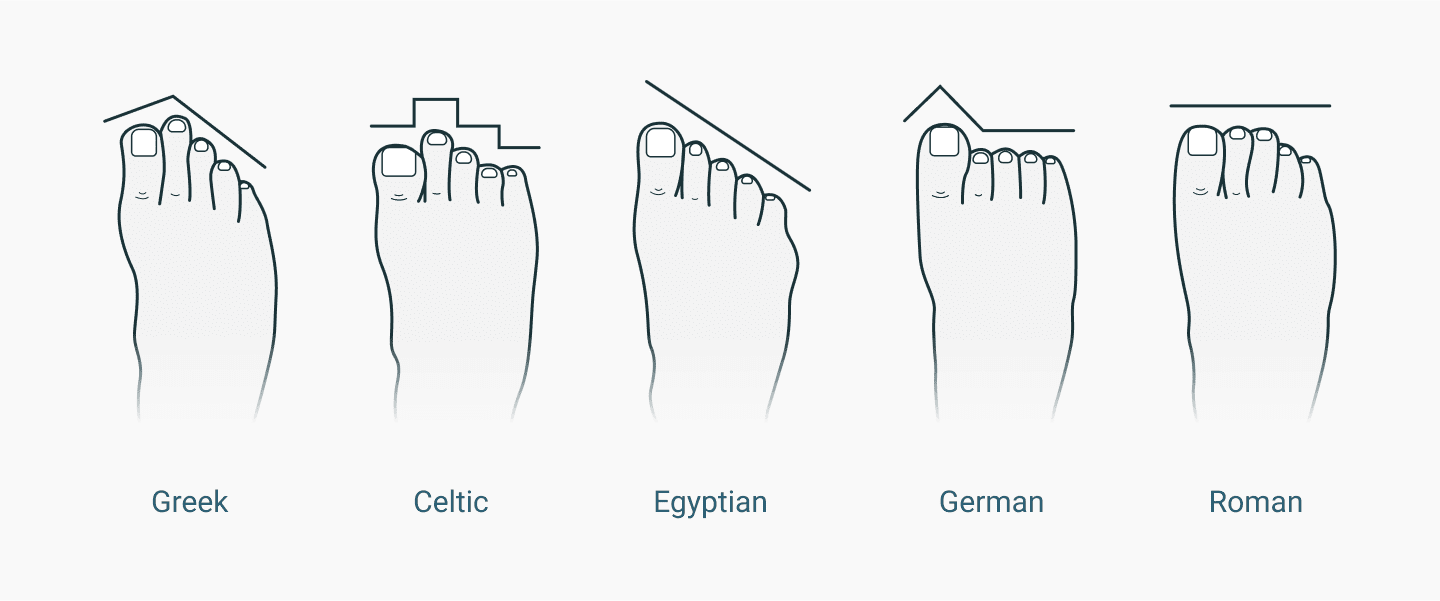
Prioritizing grip in lightweight hiking boots
Twisting ankles due to slipping or losing the ground and falling due to the boots not biting hard enough into the ground is nothing a hiker dreams about. We avoid that by focusing on the grip. The grip is about a) the hardness of the outsole/lug rubber and b) how deep the lugs are.

Fortunately, we measure both in our lab. Some general guidelines are:
- If you’re doing an average hike with no demanding/extreme elements (like scrambling, sharp large rocks, very deep mud, etc.), go for around-the-average lugs or 4mm.
- If you plan to hike on hard flat ground, go for shallower lugs (less than 4mm).
- If you plan to hike over mud, slush, or snow, go for deep lugs (deeper than 4mm).
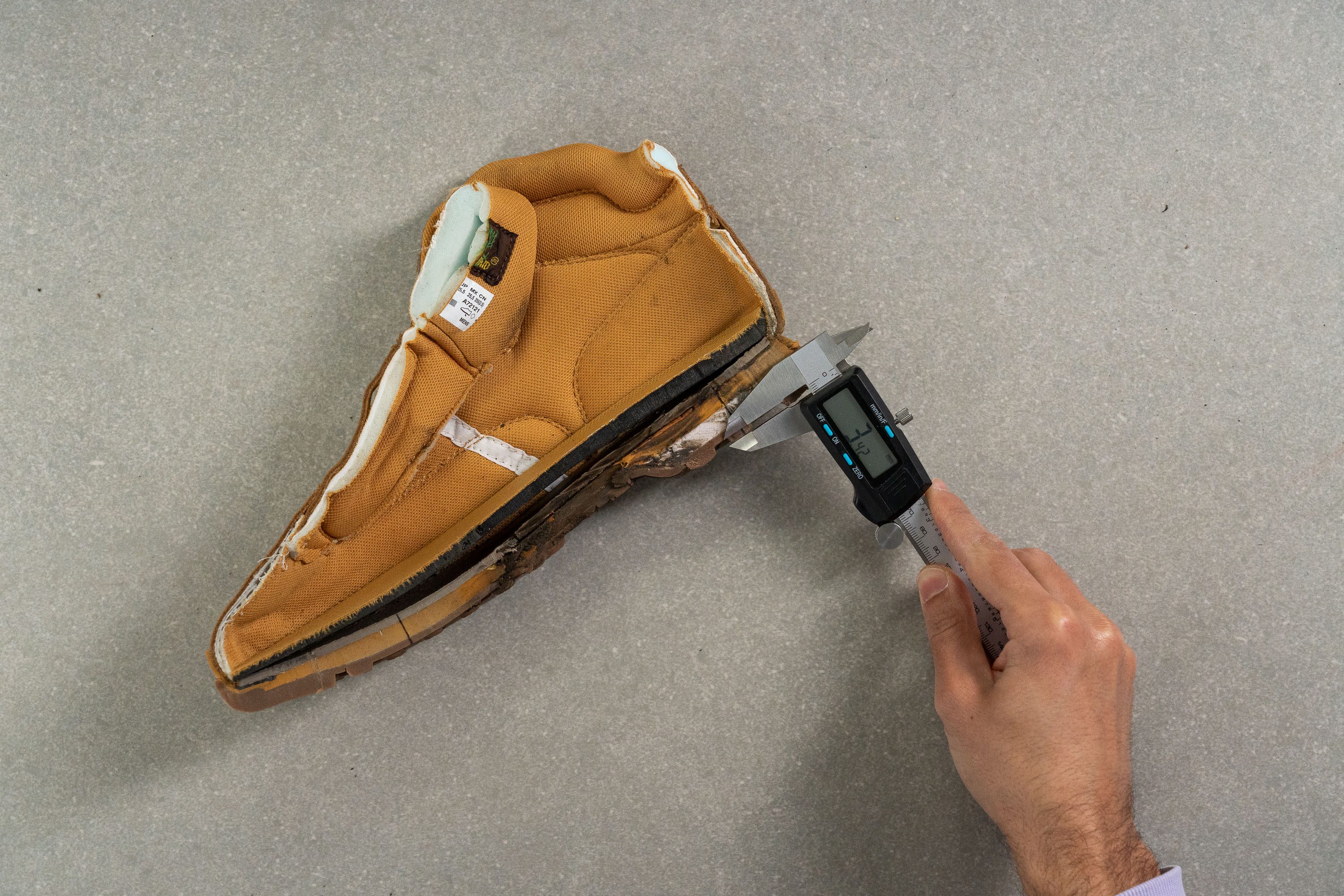
When it comes to the hardness of the rubber, usually the softer rubber is stickier and more agile, while the harder one offers more protection and is more durable.
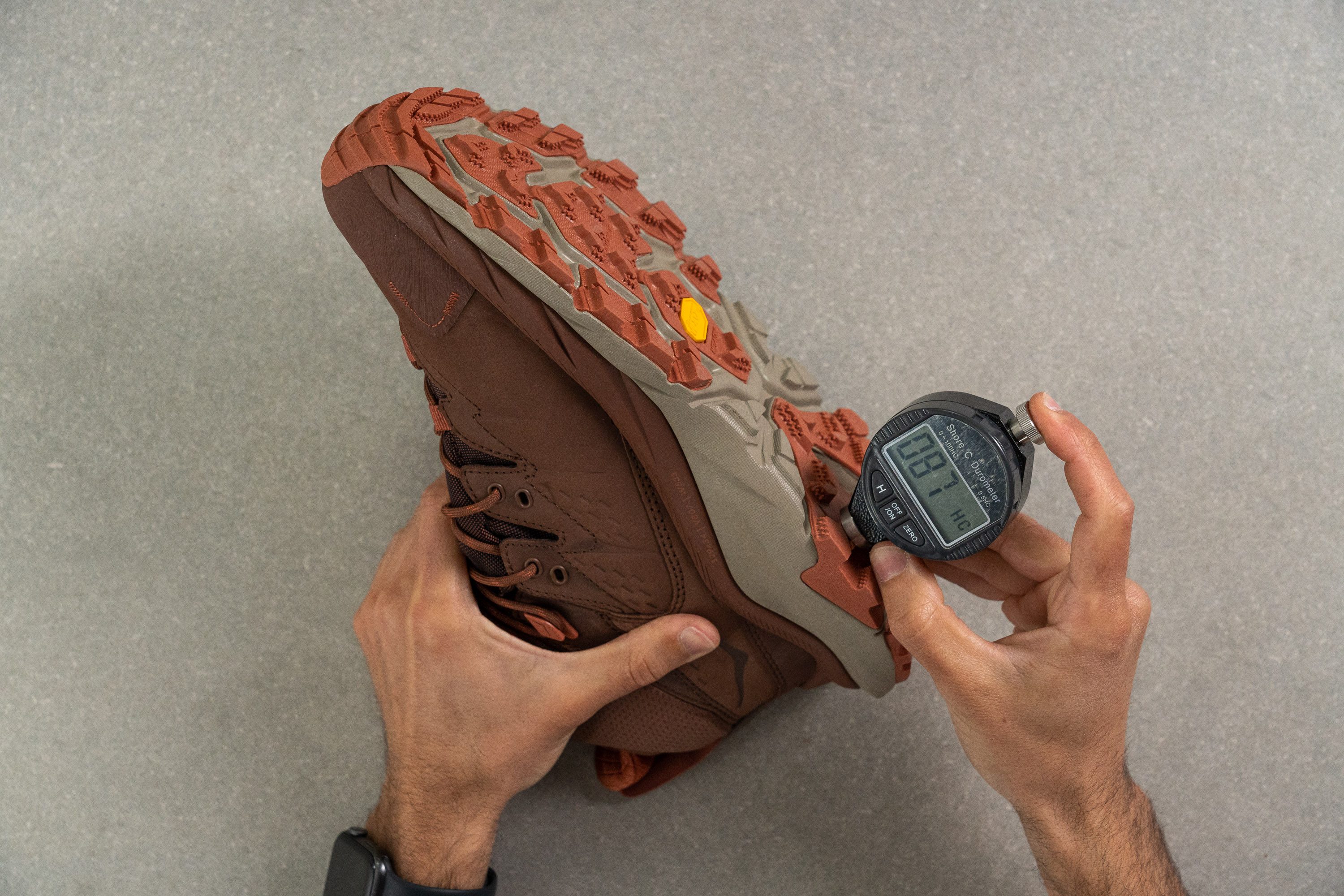
Shock absorption of lightweight hiking boots
Shock absorption tells us how good a hiking boot is at dampening the impact when you hit the ground. The midsole should compress and attenuate the impact forces so that your legs don't have to deal with them. So, the higher the shock absorption, the better.
Testing the shock absorption of lightweight hiking boots in RunRepeat lab
In the world of hiking boots, we have 3 groups: low shock absorption (less than 85 SA), medium (85-100 SA), and high shock absorption (above 100 SA).
Stability in lightweight hiking boots
While grip helps a lot with staying put and feeling planted, stability in hiking is also very important.
Testing the lateral stability of lightweight hiking boots
Here, we consider 3 factors:
- Width of the base
- Torsional rigidity
- Stiffness of the heel counter.
When it comes to the width of the base, the wider it is, the more stable you feel in the boots. We measure this width in our lab in 2 places: at the forefoot and at the heel.
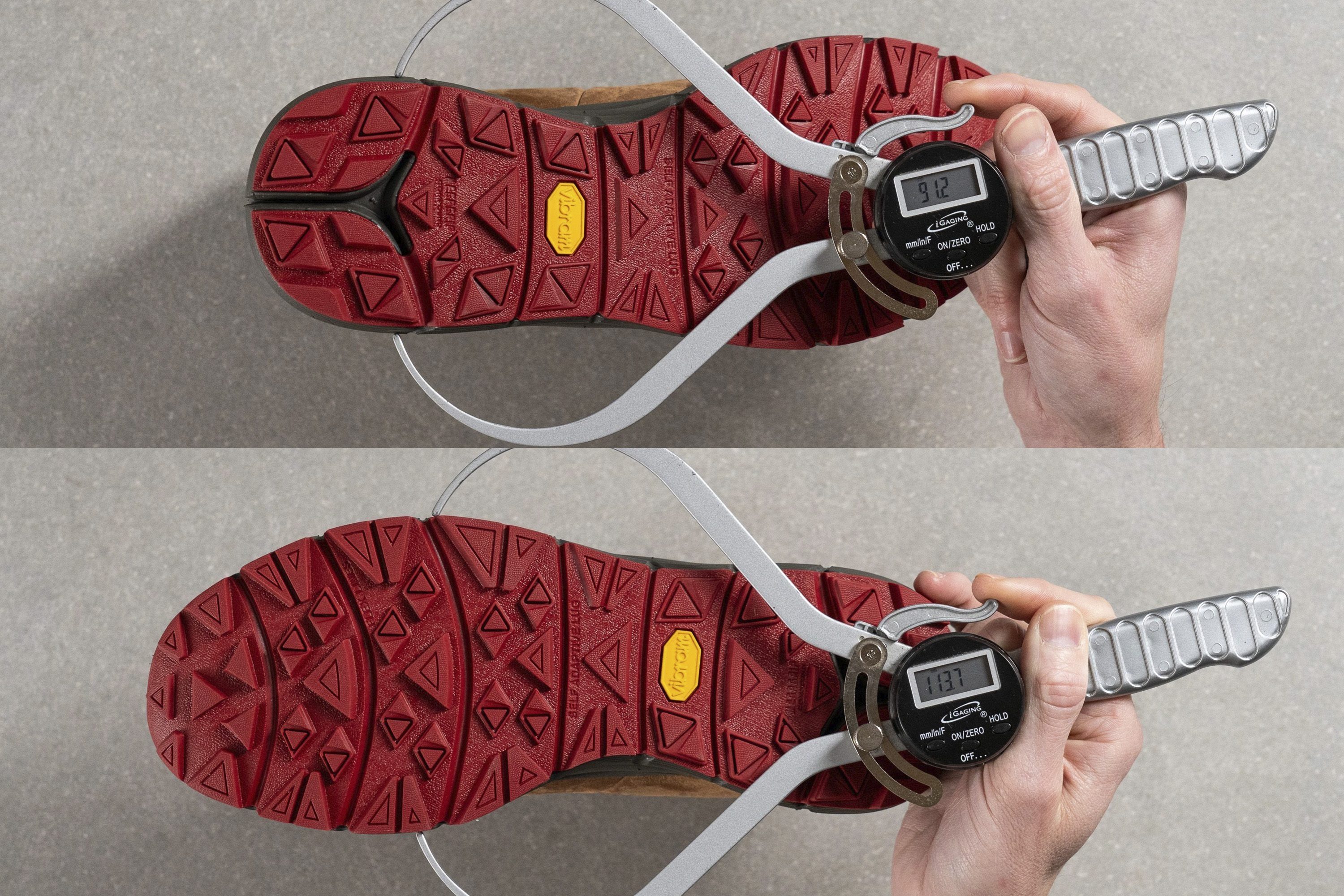
Given that we land on the heel while hiking, it’s the width we give more value to when analyzing the numbers and stability.
Torsional rigidity is assessed on a 1-5 scale, where 5 is the most rigid.
Assessing the torsional rigidity of a hiking boot
And heel counter stiffness is a very personal thing - you hate it or you love it. When it comes to stability, it does offer a bit more of it when it’s a stiff counter. It simply keeps the heel and the part below the ankle in place in a stricter way.
Assessing the stiffness of the heel counter
Taking all of these aspects into account, here are some numbers on stability in lightweight hiking boots:
Finding the most durable lightweight hiking boots
While less weight can mean less rugged materials, we’re here to check that out. We are very interested in this because more durability means more protection! This way, sharp objects and debris are less likely to penetrate the toebox or the outsole or to hurt the feet in any way. We test durability in 3 places: the toebox (upper), the outsole (or lugs), and the heel counter.
In all 3 cases, we use a Dremel to basically make damage (or a dent) on the hiking boot materials. Then, we assess or measure how big the damage is.
Toebox durability test: using a Dremel
When assessing the damage, which is something we do for the heel counter and the toebox, we give a rating on a 1-5 scale, where 5 is the most durable.
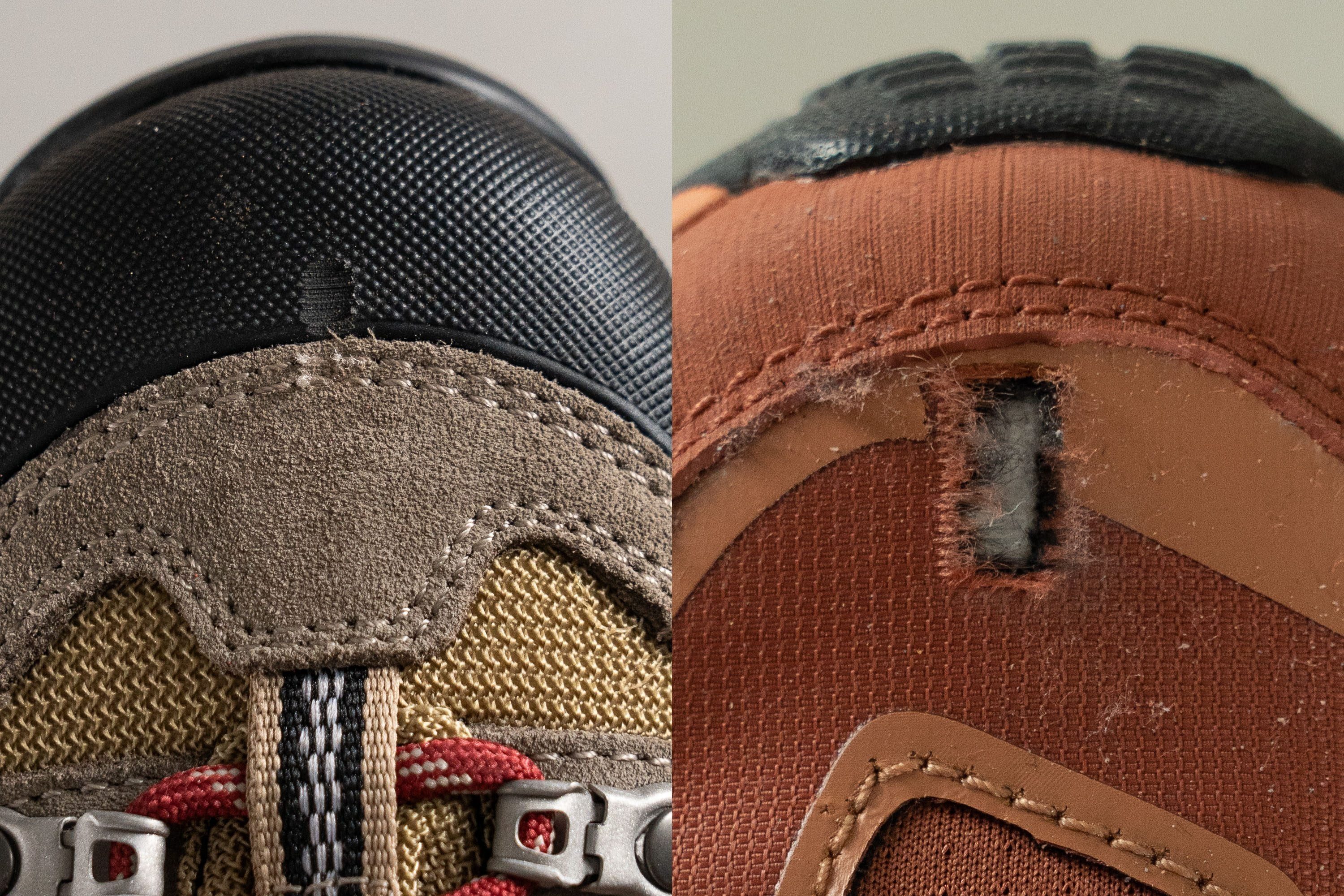

But, when measuring the durability of the outsole, we are able to measure the depth of the dent accurately, using a tire tread gauge. The deeper the dent, the less durable the outsole.
Using a Dremel to test the durability of the outsole

Based on these numbers, it’s easy to pick the more or less durable lightweight hiking boots.
The most breathable lightweight hiking boots
How to find them? Generally, look for non-waterproof boots because they tend to breathe more. And consult our breathability ratings.
In the example above, we see how a breathable, non-waterproof upper compares to a waterproof and non-breathable one
We test the breathability of lightweight hiking boots by pumping the smoke into them and watching where the smoke comes from, how fast and at which pace. Based on this, we assign a 1-5 rating, where 5 is the most breathable.
To cement our findings, we also look at the upper under the microscope. This allows us to see how dense the material is and whether there are some tiny ventilation holes.
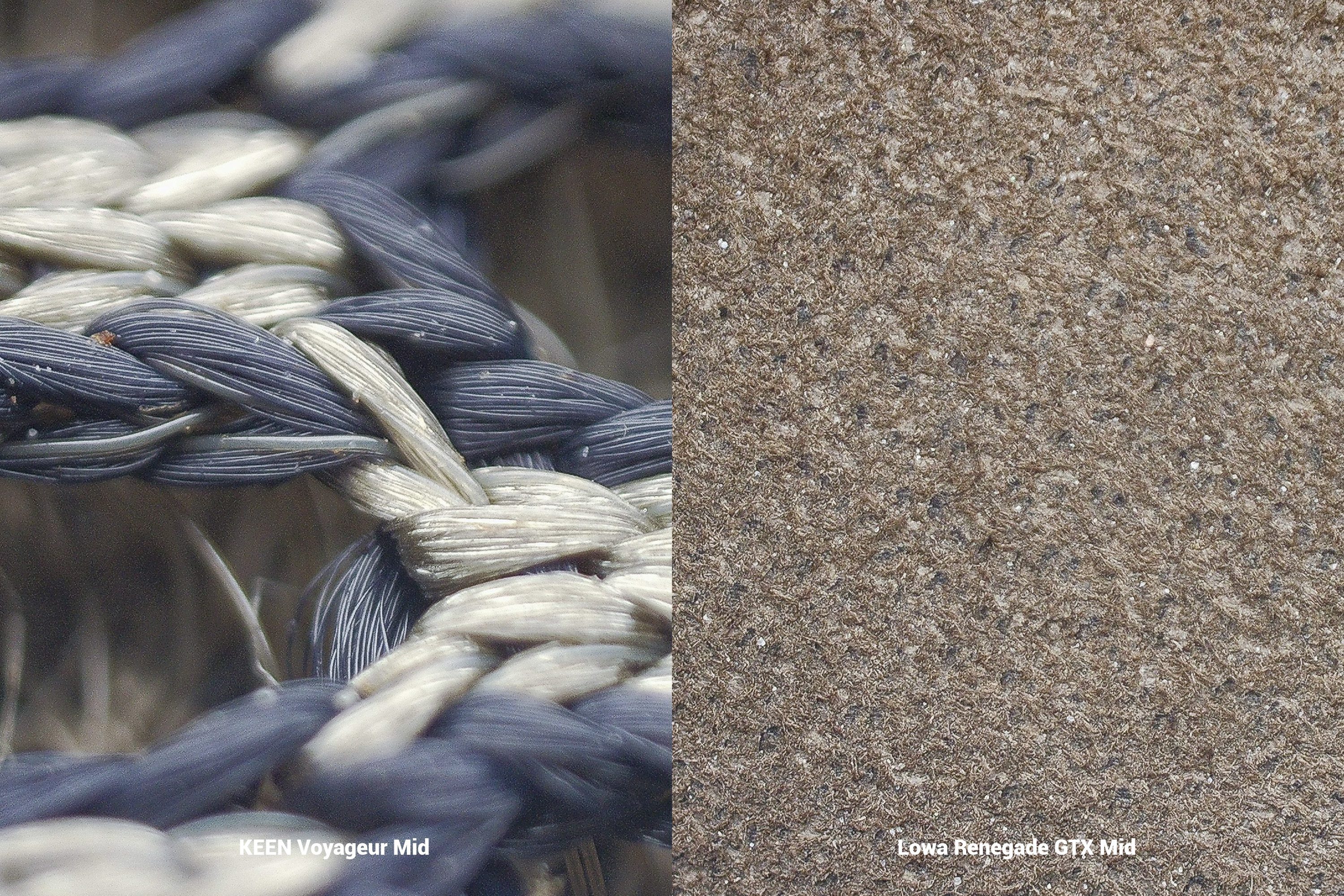
Waterproof and lightweight hiking boots
While waterproof hiking boots that are waterproof tend to weigh more, we still have boots in the category of both waterproof and lightweight.
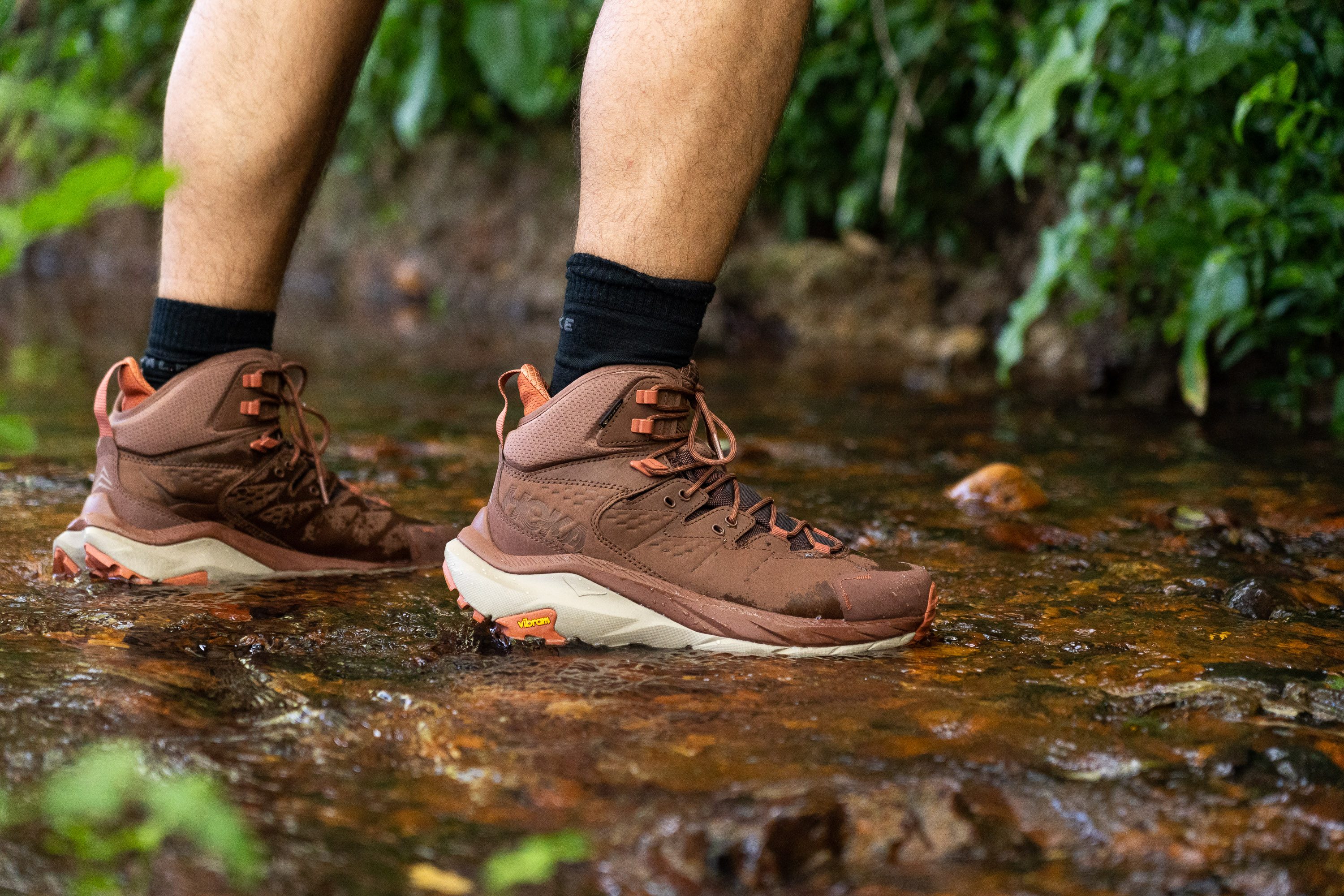
It’s easy to recognize waterproof hiking boots, they usually have the name of the membrane (like Gore-Tex) written on the upper, or simply say Waterproof or WP.
